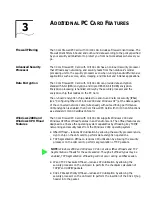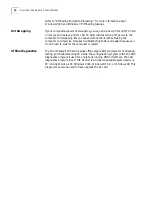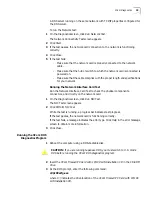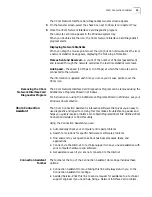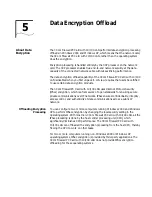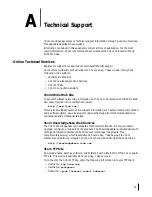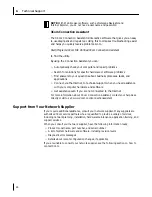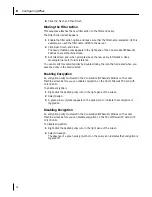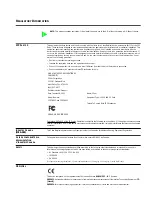
29
B
Configuring IPSec
Configuring IPSec in Windows 2000 and Windows XP
IPSec primarily consists of two parts:
encryption/decryption
authentication
To send or receive encrypted data in a PC running Windows 2000 or Windows XP with a
3Com Firewall PC Card with 10/100 LAN installed, you must first create a security policy,
and then enable encryption on the network card.
The security policy establishes and defines how encrypted network traffic between your
PC and a specified server occurs.
Authentication enables the receiver to verify the sender of a packet by adding key fields to
a packet without altering the packet data content.
The following table shows the available levels of encryption:
Encryption Type
Encryption Level
Description
AH
Medium
Authentication only
ESP
High
Authentication and encryption
Custom
Varies
Provides encryption and an extra authentication that
includes the IPheader.
Custom allows you to select options for both AH and
ESP, such as MD/SHA-1 and DES/3DES, and you can
select the rate at which new keys are negotiated.
Microsoft uses IKE key exchange to renew keys every
x seconds or y bytes. You may want to set these values
low and have frequent key updates, or higher for
better performance.
For more information, see the Microsoft
documentation about creating IPSec flows.
Example: Creating a Security Policy
The process you use to create and enable a security policy depends on your network
environment requirements. The following is an example of one approach to creating a
security policy.
NOTE
:
You must complete all of the sequences in this example to establish and
enable a security policy for transmitting and receiving encrypted data over the
network.
Содержание 3CRFW102
Страница 14: ...10 CHAPTER 1 INSTALLING THE PC CARD AND DRIVERS ...
Страница 28: ...24 CHAPTER 5 DATA ENCRYPTION OFFLOAD ...
Страница 32: ...A Technical Support 28 ...

